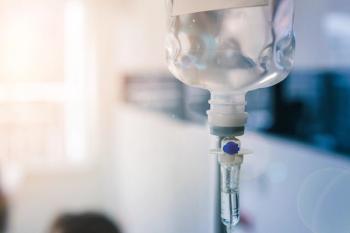
Specialty Pharmacy Certification is More Important Than Ever
Certified specialty pharmacists have greater opportunities and credibility in the growing market, according to a session at the annual NASP meeting.
Specialty pharmacy is rapidly growing sector in the pharmacy space, with no signs of slowing.
There are more than 275,000 practicing licensed pharmacists in the United States, with an estimated 12,000 new pharmacy graduates each year, according to the Specialty Pharmacy Certification Board (SPCB).
Specialty diseases and conditions are significantly more complex, and require a higher level of knowledge compared with traditional diseases and treatments. To properly service these patient populations and deliver quality care, pharmacists should become certified for specialty pharmacy, according to the session Specialty Pharmacist Certification Process presented at the National Association of Specialty Pharmacy (NASP) Annual Meeting and Educational Conference, held on September 19, 2017.
The demand for clear standards and guidelines continues to build as specialty pharmacy grows.
So, what value does becoming a certified specialty pharmacist (CSP) hold?
“When you become certified, you are able to demonstrate and affirm that you have clinical competency to manage specialty pharmaceuticals,” Gaurang Gandhi, PharmD, MHA, CSP, said in the session. “It is a tool to demonstrate proficiency in specialty pharmacy management, and is a key indicator to employers, manufacturers, and all stakeholders to realize who is a specialty pharmacist.”
According to Gandhi, key competencies of certification include meaningful interventions, a greater grasp of life of specialty patients and the prescription, and clinical strategies for care plans. Furthermore, CSP provides more job opportunities, career progression, validates experience, and credibility.
Requirements for CSP are as follows:
1. Must have a BSPharm or PharmD.
2. A current license in the United States or Canada that is in good standing with nothing pending.
3. No felony convictions.
4. A minimum of 30 hours of specialty pharmacy continuing education in the past 2 years.
5. At least 3000 hours of experience in specialty pharmacy practice within the previous 4 years.
6. Code of Conduct attestation.
7. Passing score on the CSP examination.
The exams are available twice per year in April and October. Applications must be completed in March for the April testing and in September for the October testing; however, they are flexible in the timelines to get the applications completed, noted Gary Rice, RPh, MS, MBA, in the session.
The exams have a 2-hour time limit and are taken on a computer made available in testing centers throughout the United States and Canada. Fees for initial application are $500 USD and $650 in Canada. Retesting is $400 and recertification is $300. Participants can apply through the website:
For the first time this year, NASP is offering a CSP exam prep course online that includes 8 modules. The prep course is only available annually, but NASP hopes to offer it more than once per year. Prior to the course’s creation, it was the highest request made by pharmacists.
The content domains comprise 4 sections and differs from other certifications.
“If you look at the content domains and how it’s weighted, 25% is weighted on intake,” Rice said in the session. “We can’t clinically manage a patient if we can’t bring them onboard. Our certification is a broader understanding of the patient flow operationally and clinically. If you look at other certifications that may focus entirely on the clinical aspect. The certification board felt that we wanted pharmacists to have better understanding of the patient process in gaining access.”
The percentages are clinical management 40%, fulfillment 25%, intake 25%, and outcomes 10%. According to Rice, each year the percentages are evaluated to determine whether any modifications are needed.
After the exam, pharmacists will receive their results in 4 to 8 weeks. If a candidate does not pass the exam, they can take a retest during the next testing window.
To maintain certification, pharmacists must continually maintain their license in good standing; have no felony convictions or suspensions; earn 30 continuing education hours in specialty pharmacy; re-sign the Code of Conduct attestation and maintain ongoing adherence to its requirements; and submit a completed renewal application. Additionally, an individualized learning path questionnaire must be completed, which allows SPCB to collect data on where pharmacists believe their profession is going and where they want to go.
Newsletter
Stay informed on drug updates, treatment guidelines, and pharmacy practice trends—subscribe to Pharmacy Times for weekly clinical insights.













































































































































































































